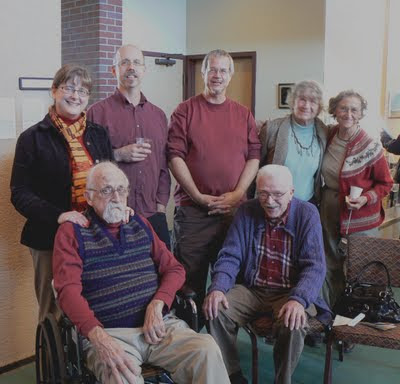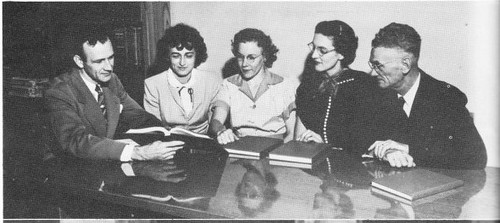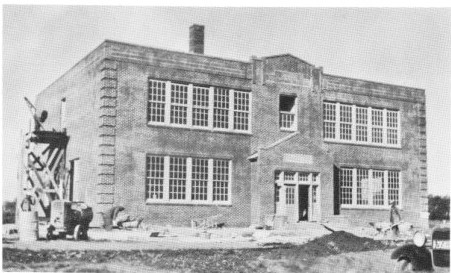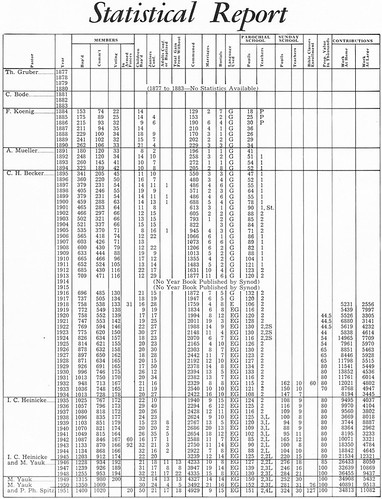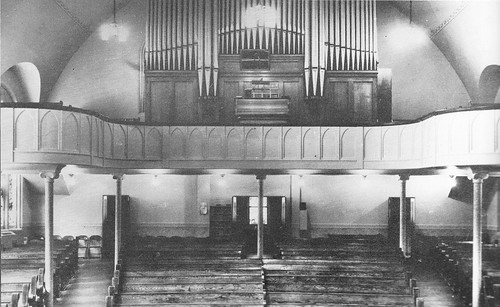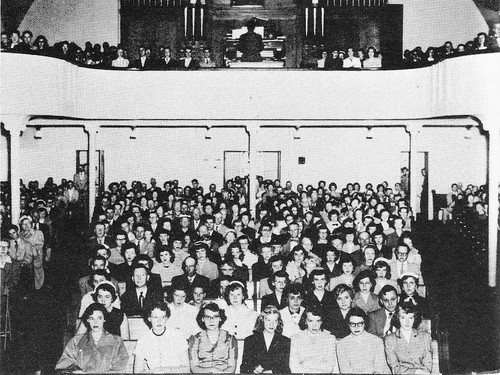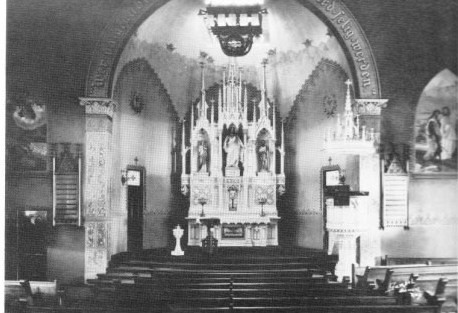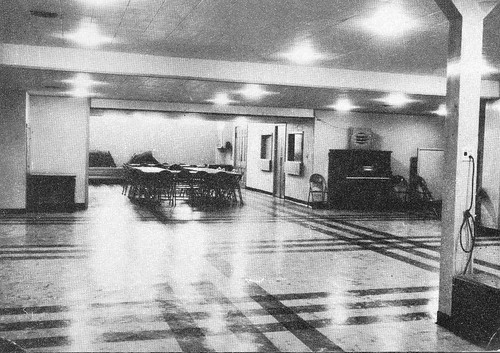Below, after some introductory remarks, is the fourth group of excerpts of Clara Alvina Koenig's manuscript An Afterglow of Yesterday. The manuscript was described in this earlier blog article.
The first group of excerpts, about J. George Weller's mother, was in this blog article.
The second group of excerpts, about the Weller family's move from Louisiana to Indiana, was in this blog article.
The third group of excerpts, about the migration of German Lutherans from the area of Fort Wayne, Indiana, to Staplehust, Nebraska, was in this blog article.
J. George Weller's parents -- Johann George Weller and Katerina Regina (Meyer) Lehnberg -- were born in Germany. They met in New Orleans, Louisiana, and eventually married there in 1854.
Two sons survived to adulthood. The older was Johann George (J. George, born in 1860), who eventually became a Lutheran pastor and then the Concordia president. The younger was Heinrich Herman (born in 1862), who eventually became a merchant.
The family moved from Louisiana to Indiana in about 1866. In 1873, when J. George Weller was 13 years old, he entered a preparatory school at Fort Wayne, Indiana, to begin his education to become a Lutheran pastor.
In 1882, J. George graduated from the Concordia Seminary in St. Louis, Missouri, married Louise Katharina Clara Eirich in New Minden, Illinois, and then moved to Marysville (now part of Staplehurst), Nebraska, where he began serving as a Lutheran pastor at Zion Evangelical Lutheran Church.
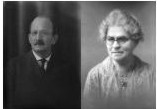
George and Clara Weller
(Flickr page)
J. George Weller's brother and parents also moved from Fort Wayne to Marysville.
J. George Weller remained in Marysville until 1894, when he moved to Seward to become the first teacher at the new seminary there.
The following passages are excerpted from the manuscript:
In the early 1880s we find Johann Georg and Katerina Weller still living on “the college farm” -- their son Henry helping with the farm work and their son George just home from college after completing his ministerial studies.
During the hard years following the Civil War, which caused the panic of 1873 and the inflation that lasted till 1879, George had attended the preparatory college at Fort Wayne.Thus there was no room-and-board bill to pay until George went to Saint Louis in the fall of 1879.
Times were still hard, so George could not go home for Christmas; in fact, he did not even return to his home in the summertime, but worked on a farm near Saint Louis. It so happened that a son of Willie Fruehe lived on a farm near the city. The younger Fruehe and his wife (who was one of Reverend Eirich’s daughters) welcomed George into their home and family just as Willie Fruehe had befriended George’s mother in New Orleans. Clara Eirich helped her sister during the busy summer months -- soon a friendship, which changed to love, developed between the girl and the student.
After three years of instruction by Dr. Walther and other famous theologians, George was graduated from the Seminary in the spring of 1882, and received a call from the country congregation at Marysville, Nebraska. During the early summer, Reverend Eirich performed the wedding ceremony that changed his daughter Clara’s name to Weller. Then the young couple proceeded to their future field of labor in Nebraska.
The people of Indiana and Illinois considered Nebraska rather wild and unsafe; but Reverend Weller's letters to his parents and his brother convinced them that both people and climate were agreeable. Best of all, George no longer suffered attacks of ague since coming to Nebraska. The change of climate from damp, swampy country to rolling, sunkist fields proved a better remedy than pills and tonics. Hoping that he, too, might overcome the chills, the fever, and the sweating which torment the ague sufferers, Henry visited his brother and sister-in-law in the fall of the year. Railroad fares had been reduced: “30-day permits” were reasonably priced because many people were going west to buy land.
Although the town was laid out in 1880, Staplehurst is not definitely mentioned in our story until now. The following is a copy of a legal document now in the possession of James Hartmann of Staplehurst (a grandson of Friedrich Hartmann). Besides being the founder of Staplehurst, Loui Niels was also one of the charter members of Zion Congregation.
In the late spring of 1883, the Weller family of Fort Wayne decided to seek a new home in the West. They traveled by rail, as Henry had done on his visit to Nebraska the preceding fall.
George and Clara were waiting at the little station in Staplehurst. They welcomed Father, Mother, and Henry, who had come to enjoy the golden sunshine and clear atmosphere of Nebraska. Reunited, the family drove to the parsonage at Marysville where the five members lived together for a while. Henry (at this time twenty-one years old) found employment in Henry Hartmann’s general store at Marysville.
Reverend Weller served as teacher during the week and delivered two sermons on Sunday: at Marysville in the morning and at Millerton in the afternoon. Zion Congregation bought a reed organ to furnish music for its services and the pastor’s wife served as organist. (After the birth of their first child, she taught the pastor to play the organ---then he became organist.)
The congregation at Millerton had no organ, but depended on a few good voices to lead the singing. Reverend Weller asked his brother “Hank” to accompany him to Millerton to help lead the singing. On one such occasion while riding together on their wagon, “Hank” inquired, “Say, George, who was that tall and rather pale-faced girl at church? She must be about eighteen or nineteen, and always sits with her mother and a sister of twelve, or so. Today, they were just across the aisle from us.”
“Oh, yes, you mean Lisette Scheumann. Mrs. Henry Hegeholz is her older sister. They have five brothers.”
“That’s good! What are their names?”
“Julius, the youngest, is going on eight -- I have him and Minnie in school. Then there is Chris, a boy of fourteen, and Henry, who is about two years older. Charlie is about my age and Bill is in the late twenties.
"There was another brother by the name of Fred. He died only a few months before you came here. The family took it awfully hard: he had been such a sturdy young man, but after suffering so long his body was a mere skeleton when he died. In spite of the terrible, lingering death, Fred’s faith remained unshaken to the very end.”
Eventually Charlie Scheumann and Hank Weller became friends, and Charlie brought his new friend home to dinner, occasionally.
After a few months, Mother and Father Weller decided that they would be happier in a house of their own: they had never before lived with anyone else. In Staplehurst, they found a suitable place consisting of a four-room house and a barn, surrounded by a garden and trees. A certain Eric Jacobs owned the place. His terms proved acceptable, and soon the older Wellers moved to their new home. (Six more rooms were added later. H. H. Weller still [in 1941] lives in that house.)
Henry, or “Hank” as he was usually called, came with his parents. He worked at Herman Meyer’s store in Staplehurst for a while and then became an insurance agent.
Under Reverend Weller's guidance and leadership, Zion Congregation grew by leaps and bounds. Within two years the school enrollment had increased to such an extent that the old building would not accommodate all of the pupils; so a new building, size 22 by 32 feet, was erected in 1884. The following year, a wing was added to the parsonage (which is the front part of the present parsonage).
After working in Nebraska for three or four years, Wilhelm Zwick felt himself in a position to establish his own household. He had rented Mr. Katt’s farm and was living with the Friedrich Scheumann family, but he longed for his fiancee in Indiana. So the young man went to Fort Wayne and married Sophie Mailand, a daughter of Fritz Mailand who always had been Sophie Scheumann’s favorite brother. Shortly after their wedding, the young couple came to Nebraska bringing the bride’s brother, Wilhelm Mailand, with them. Wilhelm, or “Bill” as he was usually called, was twenty years old at that time, and found employment as hired man on the Baermann farm.
While driving through the country as agent for the Nebraska-Iowa Insurance Company, Henry Weller often “happened to be near” the Scheumann home when evening came. He stopped to talk to his pal Charlie -- but I’m inclined to believe he was more interested in Charlie’s tall and rather good looking sister. Of course, Henry was invited to supper. On several occasions, when the night was very dark or even stormy (and the horse happened to be a shying one), Mother Scheumann insisted that the young man stay overnight.
The insurance business did not fill its agents’ pockets with money. They earned their pay, and often it was not so much at that. When Henry was offered the position of clerk in Herman Diers store, he gladly accepted it. With the combined income, he could contemplate marriage besides supporting his parents.
On October 14, 1886, Mother Scheumann and her family were all a’flutter over the last-minute details of the wedding. Large sprays of yellow, brown, and wine-colored chrysanthemums were brought in from the garden and arranged on the tables.
Already dressed for their role as attendants, Wilhelm Mailand and Charlie Scheumann helped Henry Weller so that he might be a well-groomed bridegroom. “Little Minnie” (just 15 since September) admired herself in the new yellow dress in which she was to be bridesmaid for her sister. The other bridesmaid, Elizabeth Mailand, was also dressed in yellow. She adjusted the wreath of wax flowers with which the plain silk veil was fastened to Lisette's lovely hair. The bride wore a light grey, silk-and-wool dress, trimmed with pleating and buttons and a single flower at the high neckline. The “over skirt” was fashioned into a bustle. There was no shower-bouquet in sight; in fact, there was no bridal bouquet of any kind.
The ceremony was performed in church by Rev. Weller. A reception followed, at the Scheumann home.
The newlyweds lived in town, with Henry’s folks. Shortly before the wedding, Henry had added a fifth room to the house: a large kitchen, complete with pantry and a small porch.
Everything looked rosy for nearly a year: “Hank” had a good job, Lisette enjoyed living in town, and Mother and Father Weller were well pleased with their daughter-in-law. Then misfortune befell the happy household. Through circumstances not under his control, Henry lost his job at Diers’ store. A baby daughter had arrived just before this, so there were five mouths to feed and not a single bread-winner. There was nothing but a few fruits and vegetables in the garden and eggs from the small flock of chickens. The cow, on which they had depended for a supply of milk and butter, died very suddenly. Unable to get work in town, “Hank” drove to the country and helped his brothers-in-law dig potatoes in exchange for hay and grain, with which to feed the horse and the chickens. Mother Scheumann came to the rescue with various other farm products.
Father Weller went to town every day, thinking he could find a little work of some kind. Finally, one day, he brought home good news: “Hichmann’s are selling out -- they only want $700 for the store -- if only we can raise that much!” After hurried consultation, everything was planned: Mr. Helmsdoerfer could return the five hundred dollars that he had borrowed from Henry Weller during better times, while Charlie Scheumann furnished the rest, as a loan without security. The plan worked well and everybody was happy once more.
Again in 1888, Zion Congregation found that it had outgrown the small church building; but, instead of erecting an entirely new church, the congregation decided to build an addition. Enough space was added to the west end to provide a vestry, an altar-niche, and room for an organ; at the east end, a hall was added. The small tower was replaced by a 75-foot steeple in which the new bell was hung.
During the early summer of 1888, those members of Zion Congregation who lived in and near Staplehurst decided to build a small church in town. With Reverend Weller’s help, “Immanuel Evangelical Congregation at Staplehurst” was organized on July 30, 1888. The first voting members were:
John Bartels
Wilhelm Bertram
C. Bieberich
H. Bieberich
F. Hartmann
Eric Jacobs
J. Jacobs
Herman Meyer
Chris Niemann
Jens Ocken
Lorenz Ocken
H. Porthun
Andreas Schultz
Henry Weller
Johann Georg Weller
The dimensions of the church in town were 24 by 40 by 14 feet; the new house of worship was dedicated August 13, 1888. Services were conducted by Rev. Weller.
A parsonage was built early in 1889, and Immanuel Congregation called its own minister, Rev. M. Leimer of Texas. The pastor was installed May 12, 1889.
Rev. Leimer organized a Christian day-school in the fall of 1889. The congregation bought a public-school building to house the pupils and their “teacher.”
The year was 1890 and the month was June -- that month in which flower gardens are at the height of their beauty, the air is heavy with the humming of bees and the perfume of blossoms, the days are long and mellow and the nights are refreshing.
After walking together in the yard, the three-year-old and her grandfather returned to the house: the old man sat in his arm chair and the little girl sat on the footstool at his feet. After a while, Johann Georg Weller called his daughter-in-law: “Lisette, can you come and put our little girl to bed? She fell asleep with her head on my knee.”
The mother lifted the sleeping child and carried her to the bedroom where Baby Henry slept peacefully.
A wagon stopped by the side of the house. Soon Rev. Weller and his son “Hans” stood in the doorway. The pastor spoke, “Hello, Father! How are you feeling?”
To which Father Weller replied: “Not very well, George,” and his head dropped forward on his bosom. Death came suddenly and silently to this devout man.
When the enrollment of the Christian Day School at Marysville increased to more than 80 children in 1892, it was considered necessary to build a larger school (26x40x12) and to call a teacher. Henry Hillman, a graduate of the Teachers’ Seminary at Addison, Illinois, was installed by Rev. Weller on the 28th day of August, 1892. The new school was dedicated on the same day. After that, the old building was used partly as a meeting place for the confirmation class and partly as a temporary home for the teacher.
During the same year, a new school and a teacher’s house were built one-half mile east and three-and-one-half miles north of Marysville. A “schoolclub” had been organized of members who lived a considerable distance north of the church. The children living in the North District attended this school. The teachers were Carl Hofman, W.H. Binder, and H.W. Hoeman -- succeeding each other in the order given, during a period of twenty-four years.
In 1894 a house was built for the teacher of Zion School.
If anyone wonders why Lutheran congregations build their own schools, hire their own teachers, and help support the teacher’s seminaries of their Synod, while paying taxes to help support public schools, he ought to find a satisfactory answer in the following resolutions of the Missouri Synod which were adopted in 1890, after an attempt had been made in Wisconsin and Illinois to compel all children of school age to attend public schools
1. Whereas the Word of God, our rule of life enjoins upon all Christian parents the duty of bringing up their children in the nurture and admonition of the Lord, therefore all Christian who educate their children in schools are duty bound to entrust their children who are not yet confirmed in Christian truth, to such schools only as secure the education of children in the nurture and admonition of the Lord, while at the same time it is with us self-understood that we are willing to make good citizens of our children, to the utmost of our ability, and that we also endeavor to give them the best possible schooling in the use of the English language.
2. Whereas in the non-religious public schools, wherever they are conducted in the sense of the non-religious state, not only Christian education is excluded, but also, as a rule, things not in harmony with the Word of God are by way of instruction and discipline inculcated on the children, and the spiritual life of Christian children is thus endangered and impaired; therefore we as Christians are in conscience bound to submit to no law of the state which is directed or may be used toward forcing our children into such public schools.
3. In accordance with our daily prayer, ‘Thy kingdom come!’ it is our duty to preserve and extend the orthodox Evangelical Lutheran Church in this our country, and we are, therefore, in conscience bound to combat each and every law which is directed or may be used to the detriment or damage of the Lutheran parochial schools, which are effective means of extending and perpetuating the kingdom of God.
4. Forasmuch as our Lord Jesus Christ says, ‘My kingdom is not of this world,’ and ‘Render unto Caesar the things which are Caesar’s, and unto God the things that are God’s’ the separation of Church and State is for all times to be acknowledged as in accordance with the Word of God; and since God has in this country vouchsafed unto us the precious boon of religious liberty, we may not as faithful stewards approve of any legislation which tends toward a confusion of spiritual and secular affairs and endangers our religious liberty, and we most cordially approve of combating with legitimate means such laws as have been enacted to the detriment and damage of the parochial schools in the States of Wisconsin and Illinois during the past year, while on the other hand we, for the same reason, condemn all demands upon the public funds for the erection or maintenance of parochial schools.”
While plans were being made for the erection of a college building at Seward, the board of control was looking for a suitable man to serve as professor and director. For the first there was to be a one-man faculty and Reverend Weller of Marysville was chosen.
On October 4, 1894, he placed his resignation before Zion Congregation. After accepting the resignation, the congregation wished Prof. Weller God’s continued blessing in his new field of labor. Then the congregation at Marysville called Reverend John Catenhausen of Louisville, Nebraska, to fill the vacancy. He accepted and was installed by Prof. Weller about six weeks later.
From 1889 to 1898 the pastors of Immanuel Congregation taught the pupils of the parochial school at Staplehurst. The enrollment increased rapidly during those nine years.
After teaching school for six years, besides giving special attention to the confirmation classes and performing the various duties of a pastor, Rev. Miessler asked the congregation to relieve him of the school in 1898. By that time, the number of pupils had increased to 56. Although Immanuel Congregation consisted of only 28 voting members, a graduate of Addison Teachers Seminary (now River Forest) was called for the next schoolterm. William Koenig, a member of the class of 1898 was installed by Rev. Miessler on September 4th, 1898.
On October 22nd, 1899 Rev. Miessler accepted a call to Batavia, Illinois and resigned as pastor of Immanuel Congregation.
On April 1st, 1900, Rev. G. Rademacher became the next pastor at Staplehurst. He stayed until the end of September 1902 and was succeeded by Rev. Henry Koester the following April.
Again, no events pertaining to this story and worthy of mention until July 16th, 1905. On that day, after long years of suffering, “Grandmother" Weller was called to the Eternal Rest at the age of eighty-six years. Already during childhood, her right hand was crippled; then at forty when her third child was born, Mother Weller’s left leg was weakened by an attack of milk leg and she became a semi-invalid. At seventy-three, a paralytic stroke made her a bed-ridden invalid; two more such strokes left Grandmother Weller completely paralyzed. For five years she was unable to move or even lift a small portion of her weight (about 240 pounds;) but the internal organs and the mental faculties of the paralyzed woman served her to the last. Many long hours were shortened by recounting youthful experiences to the devoted granddaughter who cared for her.
Zion Congregation again found itself without a pastor during three months of 1906. Rev. Catenhusen's health had failed during the winter and he died on March 18th, 1906. His grave is on Zion Cemetery.
Rev. Koester of Staplehurst served both his congregation and Zion until June 17th, 1906, when Rev. W.F. Rittamel of Falls City, Nebraska, was installed in his office as minister of Zion Congregation by Prof. Weller of Seward.
During the summer of 1905, Immanuel Congregation at Staplehurst sold its first school building, which stood just west of the church. The old school building was moved into the country and changed into a granary. Then the church was moved across the street, so that it stood west of the parsonage and a new church was built on the old site.
The dimensions of the second church are 34 by 60 by 18 feet and of the steeple 12 by 12 by 90 feet. The spire is crowned with a cross covered with gold leaf. Art glass windows and a white altar, and a white pulpit, both trimmed in gold and hung with purple and gold paraments (a gift of the Ladies Aid), and two gilded chandeliers added to the beauty of the new church. The cost of the church, including altar, pulpit, benches and bell, was five-thousand-six-hundred-sixty-four dollars ($5,664.00).
On the tenth of December 1905, the new house of worship was dedicated to the service of the Triune God. The old church was used exclusively as a school after that. As soon as sufficient funds ($900) were raised, a pipe organ was bought and installed. The organ was dedicated on February 4th, 1906. Immanuel Congregation rejoiced that it was well equipped with a substantial school building and a lovely new church.
“Grandmother” Weller did not live until the new building was completed and, because of her condition, could not have been taken to the dedication had she lived; but the privilege of hearing about the progress and growth of the congregation brought much happiness into the last months of the aged shut-in’s life.












